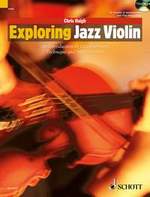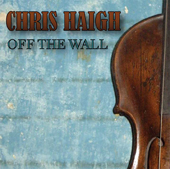
MENU TO FIDDLE STYLES:
TRADITIONAL INTONATION ON THE FIDDLE
Either it’s in tune, or it isn’t!
As a fiddle player, one of your biggest challenges, especially when starting out, is to get the thing in tune. But how to define “in tune”? Well, if you play C, for example, you’d expect it to be exactly the same as the C on a piano, or on an electronic tuner. So what are you to make of the idea that there are certain deliberate and correct notes which lie somewhere in the cracks of the piano keyboard, and that do not coincide with the “normal” 12- note scale at all? For many years I’d been vaguely aware that there was such a thing as a tempered scale, which had something to do with Bach, but it was not until I heard someone playing an exquisite “blue” note in a Norwegian fiddle tune that I realised there was more to this than just a bit of dry theory. The note in question was to me like discovering a new colour of the rainbow, and I was determined finally to try and understand what was going on. First of all, we need to know how we came to have our “conventional” scale.
PYTHAGOREAN TUNING
The Ancient Greeks were fascinated by the relationship between science, music and the Gods. The mathematician Pythagoras discovered that if you pluck a string it will give a note which varies with the length of the string. If you exactly half the length of the string, the note produced will be exactly an octave higher. Shorten the string by 1/3, and the note produced will be a fifth higher in the musical scale. So an A string, when shortened by 1/3 will produce an E note. Fifths and octaves occur in all musical systems; their simple mathematical relationship to nature lead the Greeks to an obvious conclusion, to which many will still subscribe today. Music is a gift given to us by the Gods. Unfortunately, when God, on the eighth day, created music, he screwed up rather badly. If you start on an C, and keep on reducing the string length by 1/3, you proceed round what we now call the cycle of fifths; C-G-D-A-E-B-F#. Or if we go the other way, increasing the string by 1/3, the notes descend C-F-Bb-Eb-Ab-Db-Gb. And Gb is the same as F#, right? That’s where it all goes wrong. The notes created by Pythagorean tuning, in other words by the laws of nature, do not match up and create that beautiful cycle of fifths. Gb is not the same as F#. An A note, raised by a series of perfect fifths, will never produce another A. So what does this mean for music? A scale produced from Pythagorean intervals will produce melodies which sound perfect to the human ear, because they are. What they are not good for is either harmonising together in anything other than perfect fifths (or their inversion, perfect fourths), or in allowing for key changes or modulations. As long as you stick to simple modal music, with no harmony or chordal accompaniment, Pythagorean tuning is simply the best, but once classical music had developed to the stage where it wanted to use harmonies such as major or minor thirds, or a series of different keys, terrible dissonance was created.
THE TEMPERED SCALE
The solution was simple but radical. A new scale was created by dividing the octave into 12 mathematically evenly spaced notes. In the resulting, “tempered” scale, every note was now slightly out of tune, but because the errors were spread evenly across the scale, the difference was not easy to spot, and, most importantly, you could now play thirds which sounded acceptable, and the cycle of fifths would join up, allowing Gb to sound the same as F#. With a keyboard tuned in this way, it was now possible, as demonstrated by Bach in his series of 48 pieces “The well-tempered clavier”, to move through every key without producing serious dissonance. So where does this leave the poor, long-suffering fiddle player who thought he was doing well when he learned to play his fiddle sufficiently in-tune that the cat didn’t leave the room as soon as he started practicing? The first thing you need to know is that the idea of being “in tune” is not nearly as straightforward as you thought. All modern keyboards are tuned to the tempered scale, as are electronic tuners. So if you tune each of your strings to either of these, you will find that, although your instrument sounds ok against the keyboard, your fiddle will not be perfectly in tune with itself. The open strings will not be the perfect fifth apart that you might hope for. If you are going to be playing with a keyboard or guitar, you’d better be in tune with them. If you’re playing solo, or just with other fiddlers, you are better off tuning your fifths to one another rather than to a tuner or keyboard. Not only will the fiddle sound sweeter, the open strings will also vibrate better in sympathy with the fingered notes. For example, if you play a fingered G on the E string, in tempered tuning this will not be perfectly in tune with your open G string; to make the fingered note “speak” to the open string, you need to be using Pythagorean tuning. Let’s now look at a few individual fiddle traditions and see how they deal with tuning issues.
TUNING IN IRISH FIDDLE MUSIC
The suggestion that there is such a thing as “Irish tuning” has been around for a long time. In the introduction to “The Roche Collection of Irish Traditional Music” (1909), Cathaoir O’Braonain stated; “it will always be impossible to give a perfect rendering of our old melodies except with the old intonation”. According to the tune collector Brendan Breathnach, in Irish music “C and F are somewhat sharper than the corresponding notes on the piano. It’s said that directly halfway between B and D on that instrument lies the C of traditional music”. Not everyone agreed with this analysis. In 1908 the Irish composer and arranger Arthur Warren Darley, displaying a typically arrogant classical player’s view of traditional music, gave a speech in which he debunked the whole notion:
“Because a singer or player , through lack of technical means, sang or played with a total disregard to any correctness of intonation, that did not qualify them to claim that they were using a scale of unusual construction. The majority of them did not adhere to the accepted musical scale, not that they used any other form of scale, but that their ear being totally untrained, they involuntarily produced a music not in any one scale, but in an infinity of scales of impossible construction (laughter and applause).
So does the playing of traditional Irish players amount to playing the Pythagorean scale? Almost certainly not. For one thing, it has been suggested that, just as different parts of Ireland have different playing styles and repertoires, so there were once different accepted ranges of intonation. The West Clare style, for example, is said to include rather flattened major thirds. Rather, the pitch of particular notes was used as a form of expression, almost like an ornament. The players most associated with use of traditional intonation are people like Paddy Canny, Paddy Fahey, Paddy Cronin, James Byrne, Lucy Farr, Johnny Doherty, Bobby Casey, Julia Clifford and Denis Murphy. This older generation were operating in a world which was not dominated by pitch perfect studio produced music, and in a musical setting where keyboards and guitars were rare as accompaniment. But it is not only the older players who use “traditional tuning”. Kevin Burke has recorded many tunes with neutral notes. The King of the Fairies, from the album Sweeney’s Dream has a neutral C, as does Murphy’s Hornpipe. Caoimhín Ó Raghallaigh, a young and very innovative player, also makes neutral notes a key feature of his playing.
TRADITIONAL TUNING IN OLD TIME FIDDLE
In American old time fiddling, neutral notes are very common. In their detailed and comprehensive “Ozarks Fiddle Music “ collection, Drew Beisswenger and Gordon McCann found that 64% of the tunes they transcribed from old fiddlers had raised or lowered notes. Most commonly the fourth is raised, and the 7th lowered. The effect is most striking in the pentatonic tunes, many of which are modally ambiguous, seeming to want to be both minor and major at the same time. Cluck Old Hen would be a good example.
SCANDINAVIA
Scandinavian fiddling is where you will hear perhaps the purest and most deliberate non tempered notes. Part of the reason for this is the extensive use of open string drones, and also, in Norway, of the Hardanger fiddle, which has five sympathetic strings which ring on their own in sympathy with the fingered strings. The subject was studied in detail by fiddler, composer and musicologist Eivind Groven, who in 1927 published a thesis Naturskalen- the Natural Scale. He traced the origins of this scale in Norwegian music to use of the seljeflřyte or willow flute- an instrument without fingering holes, where the notes are produced from natural harmonics. He went so far as to design a pipe organ which used the same non tempered tuning. It’s name mysteriously translates as Reindeer Voted Organ. The Hardanger fiddle has always traditionally been played solo, and so has escaped the influence of equal temperament which is found in some of the more modern repertoire of Norwegian fiddling. The five sympathetic strings, which run beneath the fingerboard, are tuned to B, G#, F#, E, C# or D. These would not ring on their own if the upper (fingered) strings were played in a tempered scale.
The whole approach to intonation is more deliberate and precise than in Irish or Old time fiddling, and there is more of a sense of using a completely different scale, rather than just modifying occasional notes in a standard scale. In conclusion, it is clear that there is far more to traditional intonation than just uneducated, sloppy playing. Francis Roche, in 1927, summed it up beautifully in the introduction to the third edition of his tune collection.
“....Those notes between the tempered scale, those are like rare rough gems, beautiful, sensual, emotional….they draw you in…and sometimes the tempered scale just feels clumsy and ill defined. I love how the voice will find natural harmonies and avoid the tempered scale, unless forced to follow that straight jacket by a more dominant and tyrannical instrument like a piano or full bore accordion. Sometimes it makes sense, when faced by such behemoths of the musical world, to quietly slip out and distract oneself by other means rather than being swallowed up by the abuse of power such things and their button pushing owners can wield. The low notes are the sound of the sea wind, and the high notes are the cry of the Banshee that it carries. Wither one alone is just a sound. Both of them together is an Irish sound”
(This article first appeared in Fiddle On magazine)


